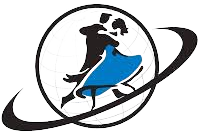Is Tibiofemoral a gliding joint?
The primary arthrokinematics of the tibiofemoral joint include roll, glide and spin. Rolling is a sagittal plane rotation; gliding, a sagittal plane translation; and spin, a transverse plane rotation. These movements are combined to maintain joint contact and stability during flexion and extension.
What glides knee flexion?
Medial/lateral glides are utilized with the patient in supine with the knee slightly flexed. To provide a medial glide, the therapist utilizes both hands to press on the inferior and superior aspects of the medial patella and deliver a force to glide the patella in a lateral direction.
What do patellar glides do?
Summary. Patellar mobilization is a hands-on treatment where pressure is applied to the kneecap. This technique helps to restore mobility in this bone and can lead to improved knee range of motion, increased function, and decreased pain.
Is the knee joint gliding?
The main movement of the knee is flexion – extension. For that matter, knee act as a hinge joint, whereby the articular surfaces of the femur roll and glide over the tibial surface.
What are the parts of the tibiofemoral joint?
The knee, also known as the tibiofemoral joint, is a synovial hinge joint formed between three bones: the femur, tibia, and patella. Two rounded, convex processes (known as condyles) on the distal end of the femur meet two rounded, concave condyles at the proximal end of the tibia.
Where is tibiofemoral joint?
Brief Anatomy of the Knee[edit | edit source] The tibiofemoral joint is where the femur meets the tibia. It includes intra-articular structures such as the menisci and cruciate ligaments (ACL and PCL) and extracapsular structure such as the collateral ligaments (MCL and LCL).
What is caudal glide?
Caudal Glides- The patient is supine. The affected hip is flexed past 90 degrees until resistance is felt. A mobilization belt is place around the patient’s proximal thigh and fastened down around the therapist’s gluteal region.
What are heel slides?
Heel slides are simple leg exercises that involve extending your leg away from your body, and bending your knee and sliding your heel toward your buttocks. You can do heel slides using a bed, floor, or wall. They’re often recommended after having a knee injury or knee or hip surgery.
What type of joint is the tibiofemoral joint?
hinge synovial joint
The tibiofemoral joint is a hinge synovial joint that joins the distal femur to the proximal tibia. The articulation occurs between the medial and lateral femoral condyles and the tibial condyles. The medial and lateral menisci increase the depth and stability, and compressive force bearing and absorption of the joint.
What are the parts of the tibiofemoral joint quizlet?
Components of Knee [Tibiofemoral] Joint
- Articular capsule.
- Medial & lateral patellar retinacula.
- Patellar ligament.
- Oblique popliteal ligament.
- Arcuate popliteal ligament.
- Tibal [medial] collateral ligament.
- Fibular [lateral] collateral ligament.
- Intracapsular ligaments [Anterior & Posterior]
Which artery is posterior to the tibiofemoral joint?
Branches of the femoral, popliteal, and circumflex fibular arteries, and posterior recurrent branches of posterior tibial artery form a peri-articular genicular anastomosis, which in turn provides blood supply to the tibiofemoral joint1.
